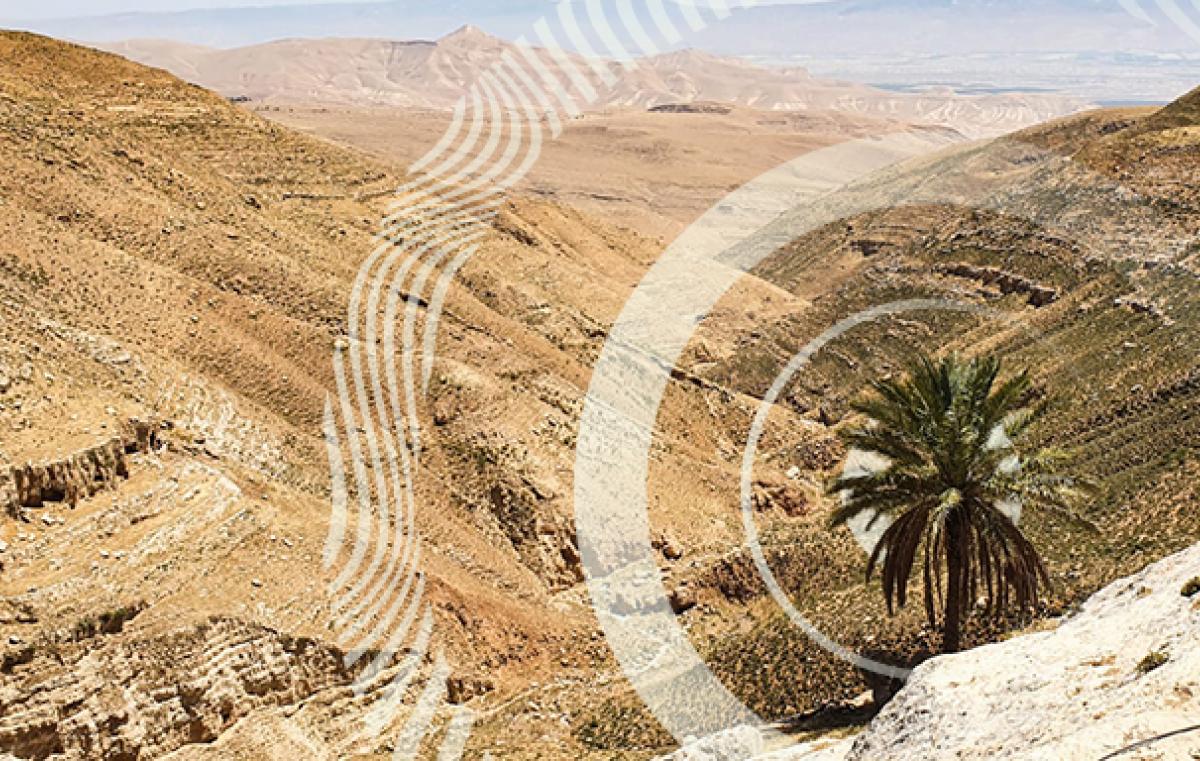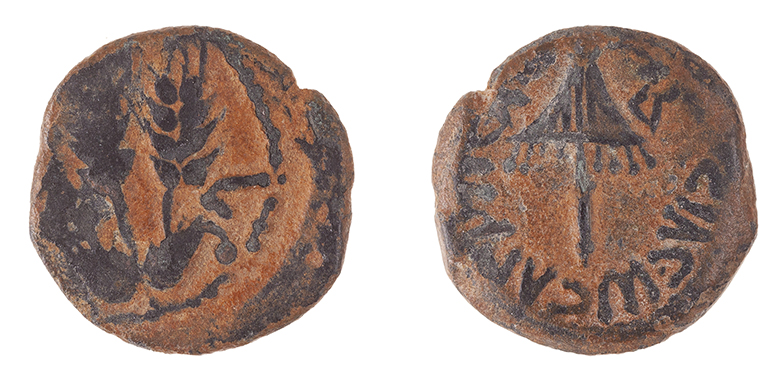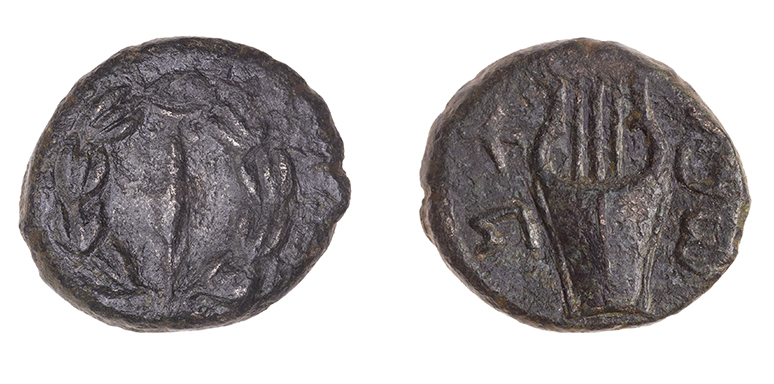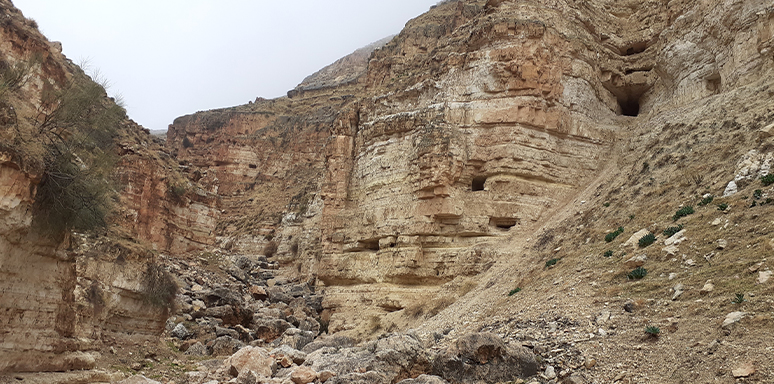A Coin, a Cave and a Rebellion
Two rare coins dating to Jewish revolts against the Romans discovered

Coins bearing the inscriptions "Herut Zion" and "LeHerut Yerushalayim" were recently discovered during an archeological survey conducted in Wadi er-Rashash in eastern Binyamin by the Institute of Archeology at Bar-Ilan University.

One coin, from the Great Revolt, was discovered on the ground at Hirbet Jib'it and the second, from the Bar-Kokhba Revolt, was found in a cave on the nearby Wadi er-Rashash cliffs about a kilometer north, according to Dr. Dvir Raviv, who heads the survey on behalf of the Bar-Ilan Institute.
The coin from the Hirbet Jib'it ruins was minted around 67/68 AD and bears a vine leaf and Hebrew inscription "Herut Zion" (the freedom of Zion) on one side, as well as a vase with two handles (amphora) and the inscription "Year Two" on the other.
The second coin from Wadi er-Rashash was minted around 134/135 AD. On one side appears a palm branch, probably a lulav (symbol from the Jewish holiday of Succot) inside a wreath surrounded by the inscription "LeHerut Yerushalayim" (for the freedom of Jerusalem), and on the other side appears a musical instrument, likely a lyre, and the inscription "Shimon", the first name of the rebel leader Shimon Ben Kosva, better known as Bar-Kokhba.

Symbols and slogans on Jewish coins during the two Roman wars declared the rebels' goals: political freedom, the liberation of Jerusalem from the Roman conqueror, and the renewal of worship in the Temple.
The coin from Hirbet Jib'it is one of additional finds from the Second Temple period and the revolts against the Romans that have been discovered at the site, including mikvaot (ritual baths), hiding complexes, chalkstone vessels and burial caves, all of which belonged to a Jewish settlement that existed at the site until the Bar-Kokhba revolt.
Alongside the Wadi er-Rashash coin, many ceramic shards that were brought to the cave by Jewish refugees during the Bar-Kokhba revolt were discovered. In this way, the cave has come to be considered one of the dozens of natural caves that were used by the rebels in the Judean Desert.

According to Dr. Raviv, the cave in Wadi er-Rashash, where the coin was discovered, is located about six kilometers north of the 'Araq en-Na’asaneh Cave in Wadi a-Daliyeh which, since its discovery in the 1960s, was considered the northernmost refuge cave of the Bar-Kokhba revolt in the Judean Desert. “The Bar-Kokhba coin from Wadi er-Rashash indicates the presence of a Jewish population in the region up to 134/5 CE, in contrast to a previous claim that Jewish settlement in the highlands north of Jerusalem was destroyed during the Great Revolt and not inhabited afterwards. This coin is also the first evidence that the Acrabatta region, the northernmost of the districts of Judea during the Roman period, was controlled by the Bar-Kokhba administration,” Raviv explained.
Binyamin Regional Council Chairman Yisrael Gantz added that "It is exciting to see that we live in a region where our ancestors lived in ancient times."